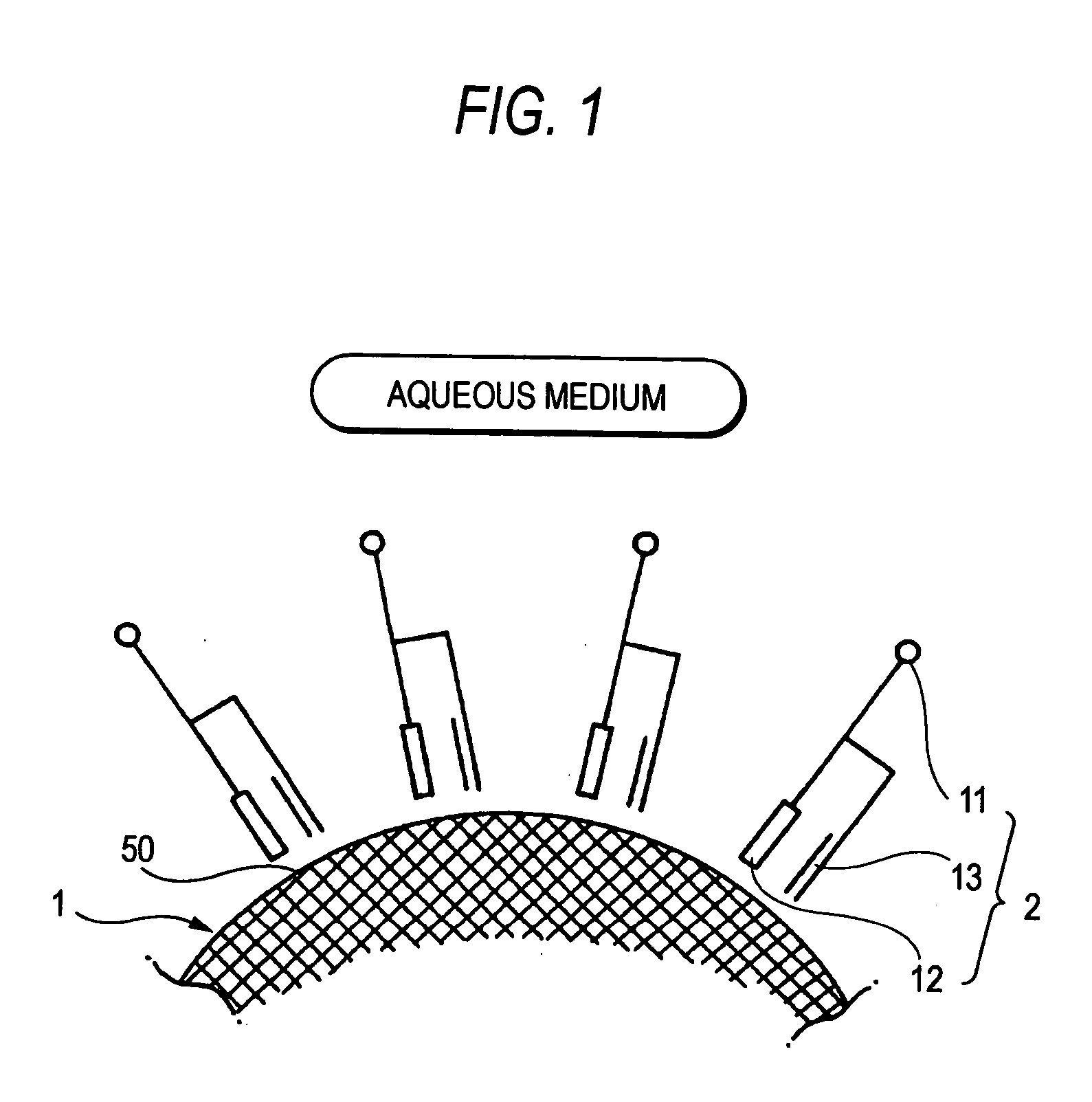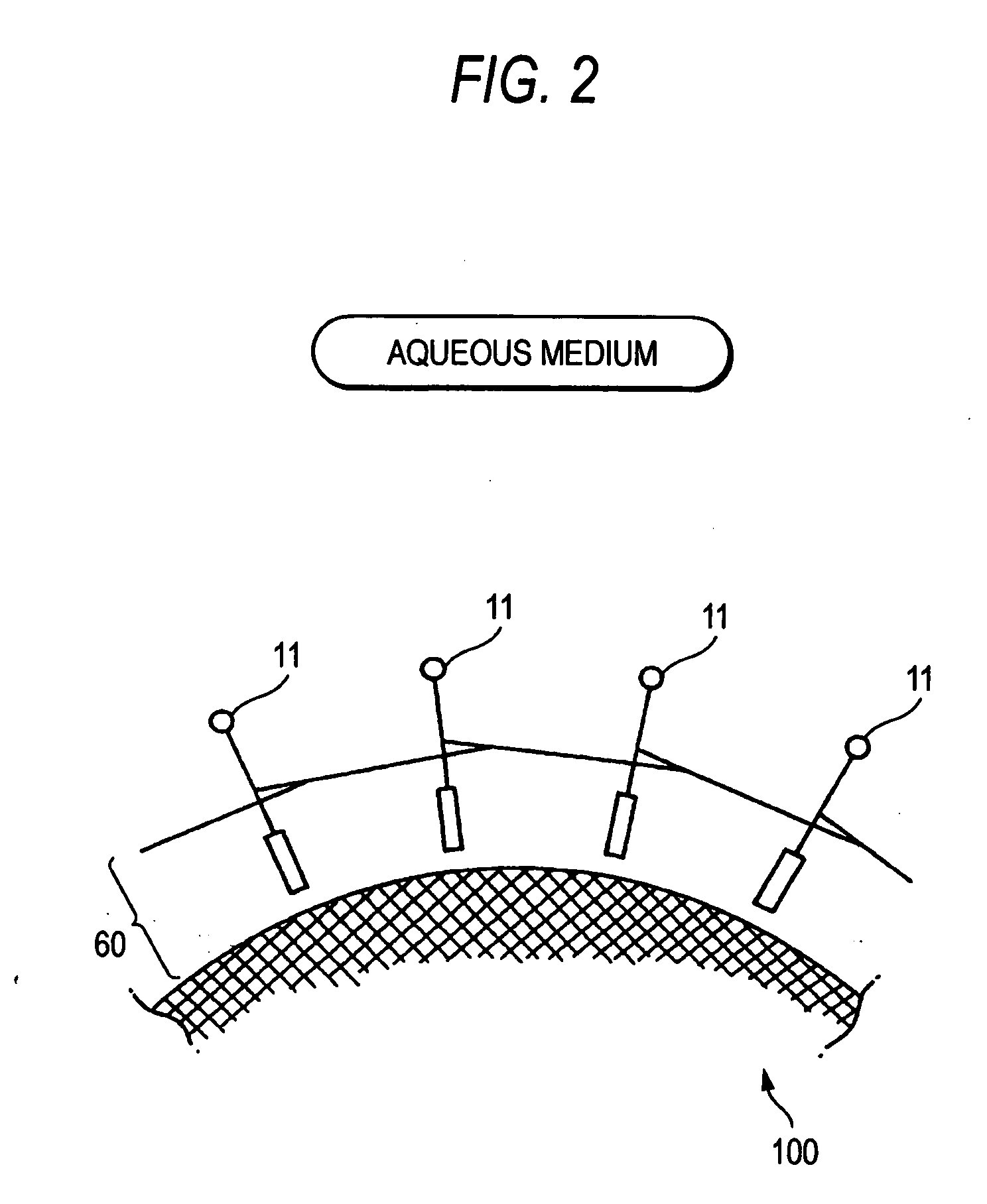Process for preparing microencapsulated pigment, microencapsulated pigment, aqueous dispersion, and ink for ink jet recording
a technology of microencapsulation which is applied in the field of preparation of microencapsulation pigment, aqueous dispersion and ink jet recording. it can solve the problems of difficult to achieve the desired ink physical properties such as viscosity, difficult to secure print density, and inability to achieve the desired value of ink. it is difficult to achieve the desired value of ink, etc., and achieves the effect of reducing the tendency of ejection and reducing
- Summary
- Abstract
- Description
- Claims
- Application Information
AI Technical Summary
Benefits of technology
Problems solved by technology
Method used
Image
Examples
examples
The present invention will be illustrated in greater detail with reference to the following Examples and Comparative Examples, but the invention should not be construed as being limited thereto.
Preparation of Microencapsulated Pigment “MCP1”
A hundred grams of a wet cyan pigment (C.I. Pigment Blue 15:3 having a water content of 60%), 10 g of a polymerizable surfactant, Aqualon KH-10, and 50 g of ion exchanged water were added and mixed, and then, dispersed in an Eiger Motor Mill, Model 250 (manufactured by Eiger Japan Co., Ltd.) under the conditions of a bead loading of 70% and 5,000 revolutions for 1 hour. This was put into a reaction vessel equipped with a stirrer, a reflux condenser, a dropping funnel, a temperature controller, a nitrogen-introducing pipe and an ultrasonic generator. Then, after the internal temperature of the reaction vessel was elevated to 80° C., an aqueous solution of 0.2 g of potassium persulfate, a polymerization initiator, dissolved in 10 g of ion excha...
examples 1 to 8
Inks for ink jet recording of Examples 1 to 8 were prepared, based on compositions shown in Table 2.
TABLE 2Ex. 1Ex. 2Ex. 3Ex. 4Ex. 5Ex. 6Ex. 7Ex. 8MicroencapsulatedMCP1888PigmentMCP28MCP38MCP48MCP58MCP68Wetting AgentGlycerol1513121313131313PenetrantDiethylene glycol monobutyl ether5355Triethylene glycol monobutyl ether2521,2-Hexanediol22332Solid Wetting AgentTrimethylolpropane5755571,2,6-Hexanetriol5Xylitol10.5Polar Solvent2-PyrrolidoneSurfactantOlfine E101011pH AdjusterPotassium hydroxide0.10.10.10.10.10.10.10.1PreservativeProxel XL-20.050.050.050.050.050.050.050.05WaterIon exchanged waterbal.bal.bal.bal.bal.bal.bal.bal.
The amounts added are all indicated by % by weight.
The amounts of the microencapsulated pigments are indicated by the solid concentration.
examples 9 and 10
Inks for ink jet recording of Examples 9 and 10 were prepared based on compositions shown in Table 10.
TABLE 10Example 9Example 10MicroencapsulatedMCP206PigmentMCP216Wetting AgentGlycerol1213PenetrantDiethylene glycol3Solid Wetting Agentmonobutyl etherTriethylene glycol3monobutyl ether1,2-Hexanediol32Trimethylolpropane321,2,6-Hexanetriol1Polar Solvent2-Pyrrolidone1SurfactantOlfine E101011pH AdjusterPotassium hydroxide0.10.1PreservativeProxel XL-20.050.05WaterIon exchanged waterbal.bal.
The amounts added are all indicated by % by weight.
The amounts of the microencapsulated pigments are indicated by the solid concentration.
The above-mentioned evaluations 1 to 11 were carried out for the inks for ink jet recording of Examples 9 and 10. As a result, excellent inks for ink jet recording were obtained similarly to Examples 1 to 8. The results thereof are shown in Table 7.
Further, for the inks of Examples 9 and 10 and the inks prepared in some of Comparative Examples described abov...
PUM
| Property | Measurement | Unit |
|---|---|---|
| aspect ratio | aaaaa | aaaaa |
| boiling point | aaaaa | aaaaa |
| aspect ratio | aaaaa | aaaaa |
Abstract
Description
Claims
Application Information
 Login to View More
Login to View More - R&D
- Intellectual Property
- Life Sciences
- Materials
- Tech Scout
- Unparalleled Data Quality
- Higher Quality Content
- 60% Fewer Hallucinations
Browse by: Latest US Patents, China's latest patents, Technical Efficacy Thesaurus, Application Domain, Technology Topic, Popular Technical Reports.
© 2025 PatSnap. All rights reserved.Legal|Privacy policy|Modern Slavery Act Transparency Statement|Sitemap|About US| Contact US: help@patsnap.com



